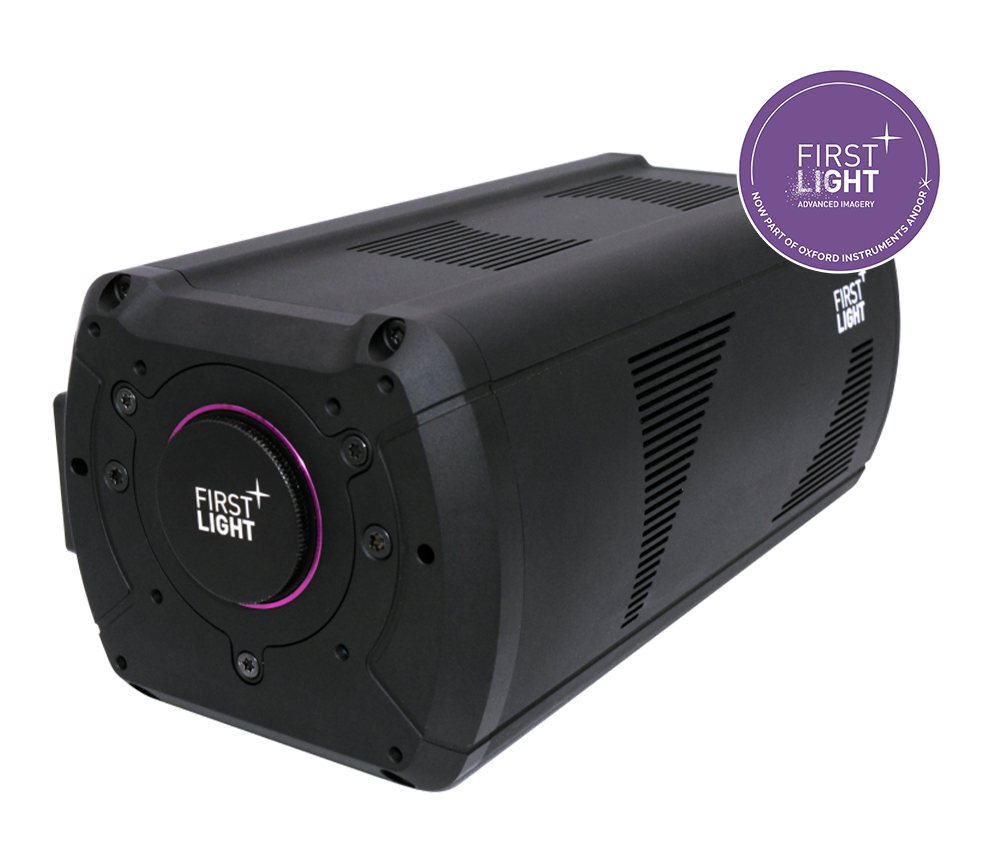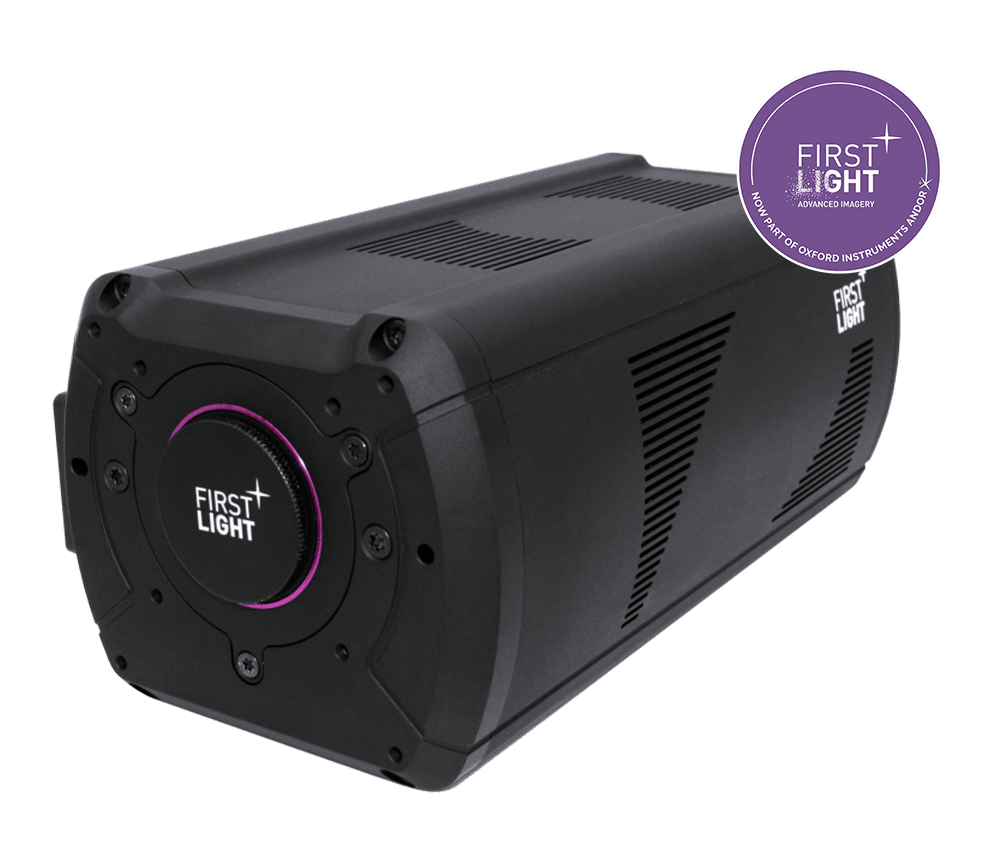The CB2 24B is equipped with a highly sensitive 24.5 megapixel, rear-facing sensor that enables high-resolution, large field-of-view imaging. A unique on-chip 2x2 pixel "binning" feature allows the conversion of a native 2.74 µm pixel to a 5.48 µm pixel without doubling the read noise. This inherent optical flexibility greatly expands the camera's customization options for various applications.
The CB2 24B is also a great solution for longer exposure applications such as luminescence or astronomy, for which sCMOS cameras are not normally suited. For long exposures lasting several seconds to minutes, the main source of noise is the dark current. The CB2 24B has been designed to take full advantage of the sensor's potential for longer exposures, thanks to thermoelectric cooling to -20 °C, which minimizes the dark current to an ultra-low 0.0015 e-/p/s. This is on the order of 100-1000 less than commonly used sCMOS cameras, making the CB2 24B a real alternative to deep-cooled CCD cameras for many long-exposure applications. In addition, it is qualified for operation at low ambient temperatures down to -40°C, making it ideal for observation at high altitudes or in harsh environments.
The CB2 24B is also highly suitable for high-speed applications, providing 74 frames per second (at full resolution) in 12-bit mode, along with the ability to increase to 283 frames per second when using 2x2 binning. In addition, the camera can measure variability over a wide range of time scales, making it an ideal choice for ion flux microscopy, cell motility, adaptive optics, speckle interferometry, and quantum ion or neutral atom dynamics.
The camera uses CoaXPress 2.0 or GigE interfaces, ensuring stable data transmission with very low latency and the highest real-time capability, even over longer distances. The CB2 24B is compatible with GigE Vision and GenICam. A native C-bracket ensures wide compatibility, while a TFL bracket is available on request for longer optical openings.




